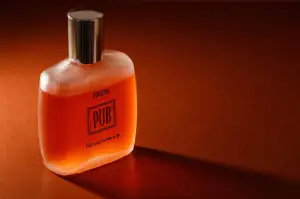Revive the Magic: Unlocking the Secrets to Cleaning a Rusty Cast Iron Skillet

A rusty cast iron skillet may seem like a lost cause, but fear not! With the right techniques and a little bit of elbow grease, you can revive the magic of your beloved cookware. Cast iron skillets are known for their durability and ability to retain heat, making them a staple in many kitchens. However, over time, they can develop rust if not properly cared for. In this article, we will unlock the secrets to cleaning a rusty cast iron skillet and bring it back to its former glory. So let's roll up our sleeves and get ready to restore the magic!
Gather necessary supplies for cleaning
To successfully clean a rusty cast iron skillet, it is essential to gather the necessary supplies beforehand. These items will make the cleaning process easier and more effective. Here are the supplies you will need:
1. Scrub brush or sponge: Choose a brush or sponge specifically designed for cast iron to avoid scratching the surface.
2. Coarse salt: Coarse salt acts as an abrasive and helps to remove rust particles from the skillet.
3. White vinegar: Vinegar is a natural acid that helps dissolve rust and restore the skillet's surface.
4. Baking soda: Baking soda is another effective rust remover and can be used as an alternative to vinegar.
5. Paper towels or clean cloth: These will be used to wipe down the skillet during the cleaning process.
6. Vegetable oil or shortening: After cleaning, you will need oil or shortening to season the skillet and prevent future rusting.
By gathering these supplies in advance, you'll be fully prepared to tackle the task of cleaning your rusty cast iron skillet and restoring its former glory.
Preparing the cast iron skillet for cleaning
Before diving into the process of cleaning a rusty cast iron skillet, it's important to properly prepare the skillet. Start by removing any loose rust or debris from the surface using a stiff brush or steel wool. Be gentle yet thorough to avoid damaging the skillet's seasoning. Once the loose rust is removed, rinse the skillet with warm water and mild dish soap to remove any remaining dirt or grease. Avoid using harsh chemicals or soaking the skillet for extended periods as this can strip away the seasoning. After rinsing, dry the skillet thoroughly with a clean towel or by placing it on low heat on your stovetop. Now that your cast iron skillet is prepped and ready, let's move on to removing that stubborn rust!
Removing rust from the cast iron skillet
To remove rust from a cast iron skillet, start by scrubbing the surface with a stiff brush or steel wool. Use warm water and mild dish soap to help loosen the rust. Rinse the skillet thoroughly and inspect for any remaining rust spots.
For stubborn rust, create a paste by mixing equal parts baking soda and water. Apply the paste to the affected areas and let it sit for about 15 minutes. Then, scrub again with a brush or steel wool until the rust is gone.
If there are still traces of rust, try using white vinegar. Fill the skillet with enough vinegar to cover the rusty areas and let it soak for a few hours or overnight. Afterward, scrub away any remaining rust with a brush or steel wool.
Once all the rust is removed, rinse the skillet well with water to remove any residue. Dry it completely using a towel or by placing it on low heat on your stovetop.
Remember that removing rust may also strip off some of the seasoning on your skillet. So, make sure to season it properly afterward to restore its non-stick properties and prevent future rusting.
Seasoning the cast iron skillet after cleaning
After successfully removing the rust from your cast iron skillet, it's crucial to season it properly to restore its natural non-stick surface and prevent future rusting. To season your skillet, follow these simple steps:
1. Preheat your oven: Set your oven to 350°F (175°C) and allow it to preheat while you prepare the skillet.
2. Apply a thin layer of oil: Using a paper towel or cloth, apply a thin layer of vegetable oil, flaxseed oil, or any other high-smoke point oil all over the skillet, including the handle.
3. Remove excess oil: Wipe off any excess oil from the skillet's surface. The goal is to create a very thin and even layer.
4. Place in the oven: Put the oiled skillet upside down on the middle rack of your preheated oven. Placing aluminum foil on the lower rack will catch any drips.
5. Bake for one hour: Allow the skillet to bake for one hour to allow the oil to polymerize and form a protective coating on the iron surface.
6. Cool and repeat if necessary: After an hour, turn off the oven and let the skillet cool inside before removing it. If you feel that your seasoning isn't sufficient, repeat this process once or twice more until you achieve a smooth and glossy finish.
Remember, seasoning is an ongoing process that improves over time with regular use and proper care. Each time you cook with your cast iron skillet using oils or fats, you're further enhancing its seasoning and creating a naturally non-stick surface.
By following these steps, you'll be able to revive your rusty cast iron skillet into a kitchen staple that will provide years of cooking pleasure. So go ahead, unleash the magic of your restored cast iron skillet and enjoy delicious meals cooked with love!
Proper maintenance tips for preventing rust in the future
Proper maintenance is key to preventing rust from reappearing on your cast iron skillet. Here are some tips to help you keep your skillet in top condition:
1. Dry it thoroughly: After each use, make sure to dry your skillet completely. Any moisture left on the surface can lead to rust formation.
2. Avoid soaking: Never soak your cast iron skillet in water or leave it submerged for prolonged periods. This can cause the protective seasoning layer to break down and expose the iron to moisture.
3. Use gentle cleaning methods: Avoid using harsh detergents or abrasive scrubbers that can strip away the seasoning. Instead, opt for a gentle scrub with a non-abrasive sponge or brush.
4. Re-season regularly: Over time, the seasoning on your skillet may wear off. To maintain its non-stick surface and prevent rust, re-season it periodically by applying a thin layer of oil and baking it in the oven.
5. Store it properly: When storing your cast iron skillet, ensure it is completely dry and free from any moisture. You can place a paper towel inside to absorb any excess moisture and prevent rust from forming.
By following these maintenance tips, you can enjoy a rust-free cast iron skillet that will last for generations to come!
Now that you have successfully cleaned and seasoned your rusty cast iron skillet, it's time to enjoy the fruits of your labor. With proper care and maintenance, your skillet will continue to serve you for years to come.
Remember to always dry your skillet thoroughly after each use and apply a thin layer of oil to prevent rust from forming. Avoid using harsh detergents or scrubbing pads that can strip away the seasoning. Instead, opt for gentle cleaning methods like using salt or a nylon brush.
By following these simple steps, you can revive the magic of your cast iron skillet and unlock its full potential in the kitchen. So go ahead, whip up some delicious meals and let the flavors truly shine with your restored cast iron skillet as the star of the show.
Experience the joy of cooking with a well-seasoned cast iron skillet and savor every bite knowing that you have unlocked the secrets to keeping it rust-free. Happy cooking!
Published: 03. 02. 2024
Category: Home



